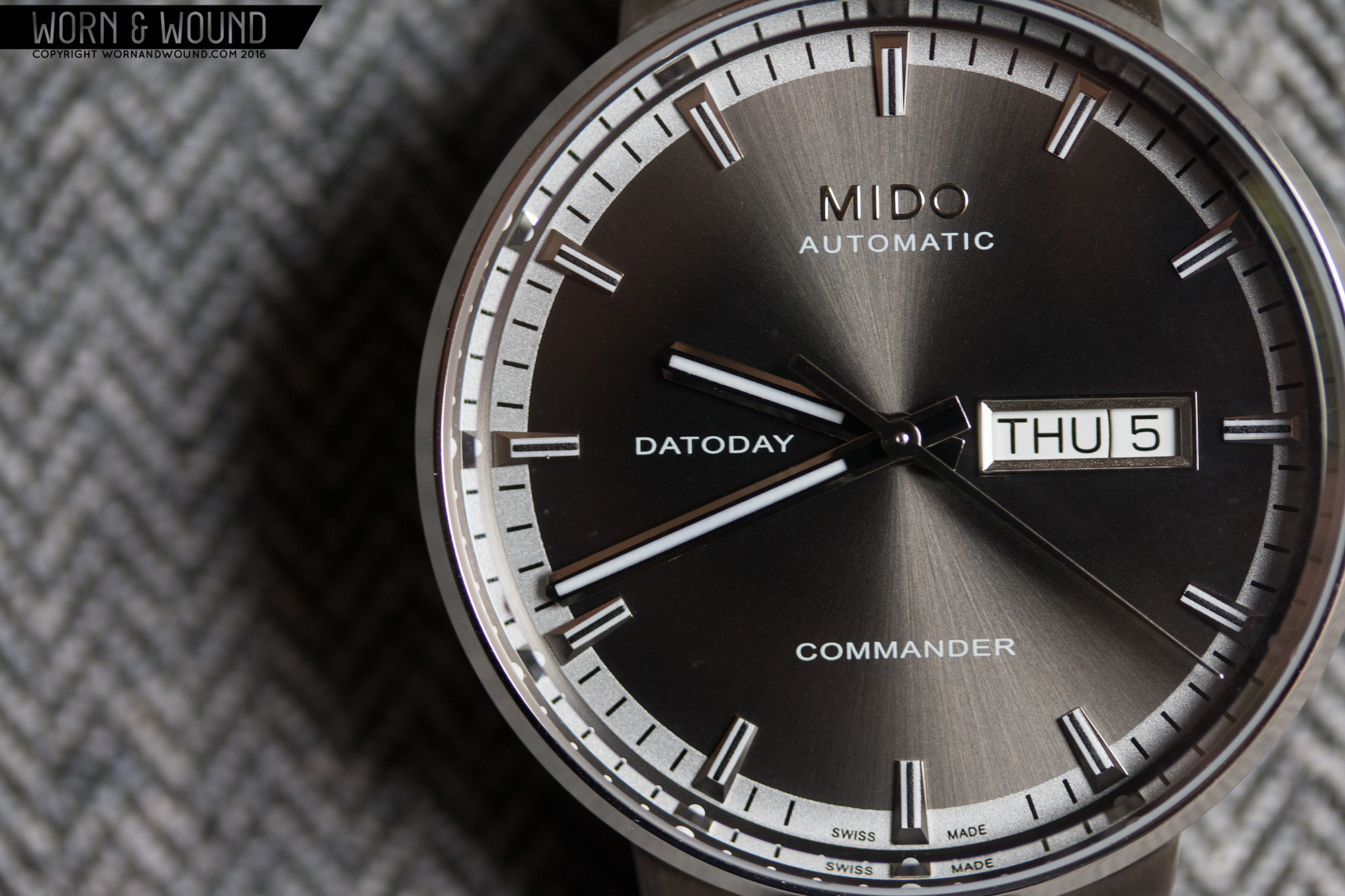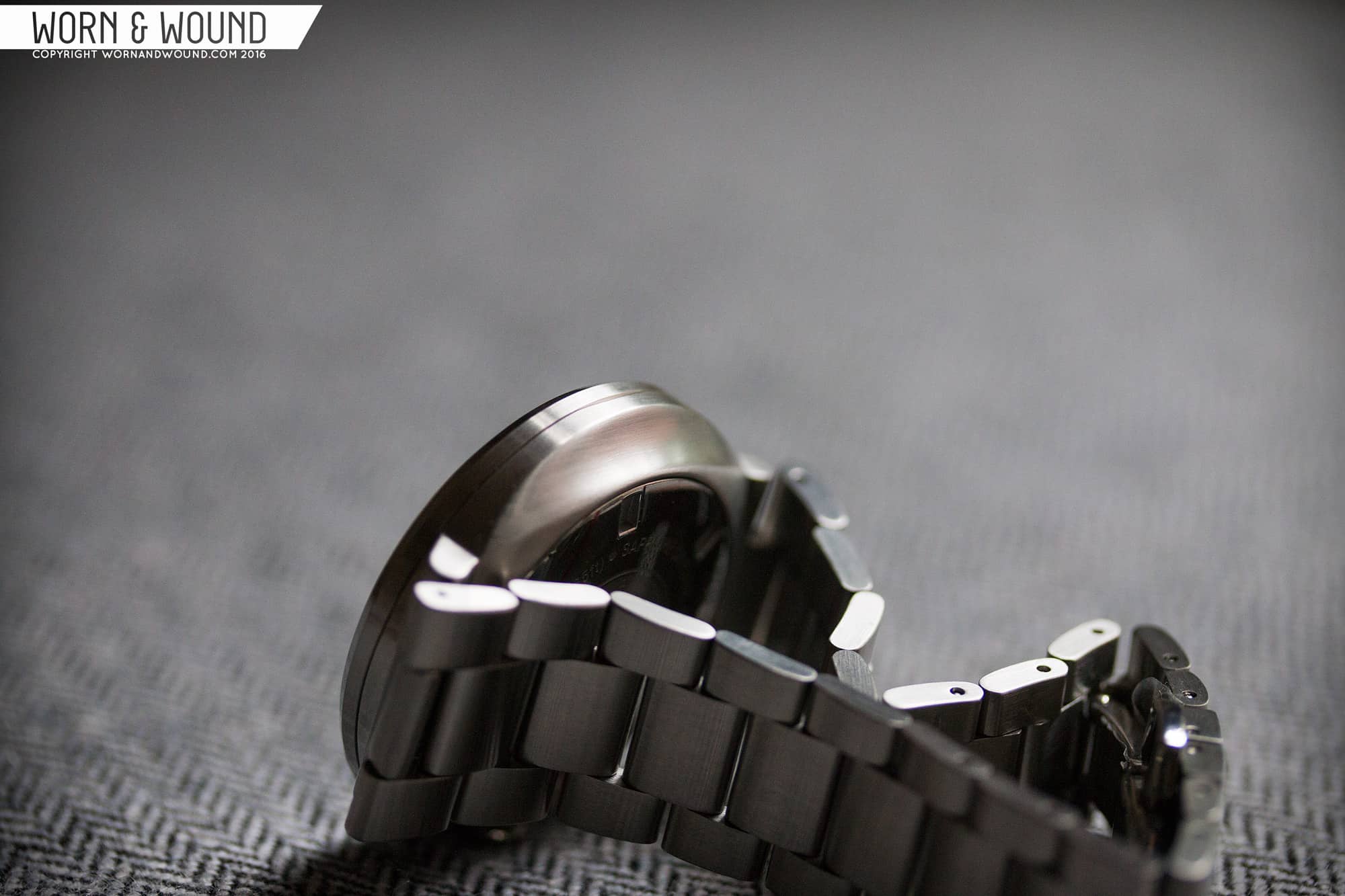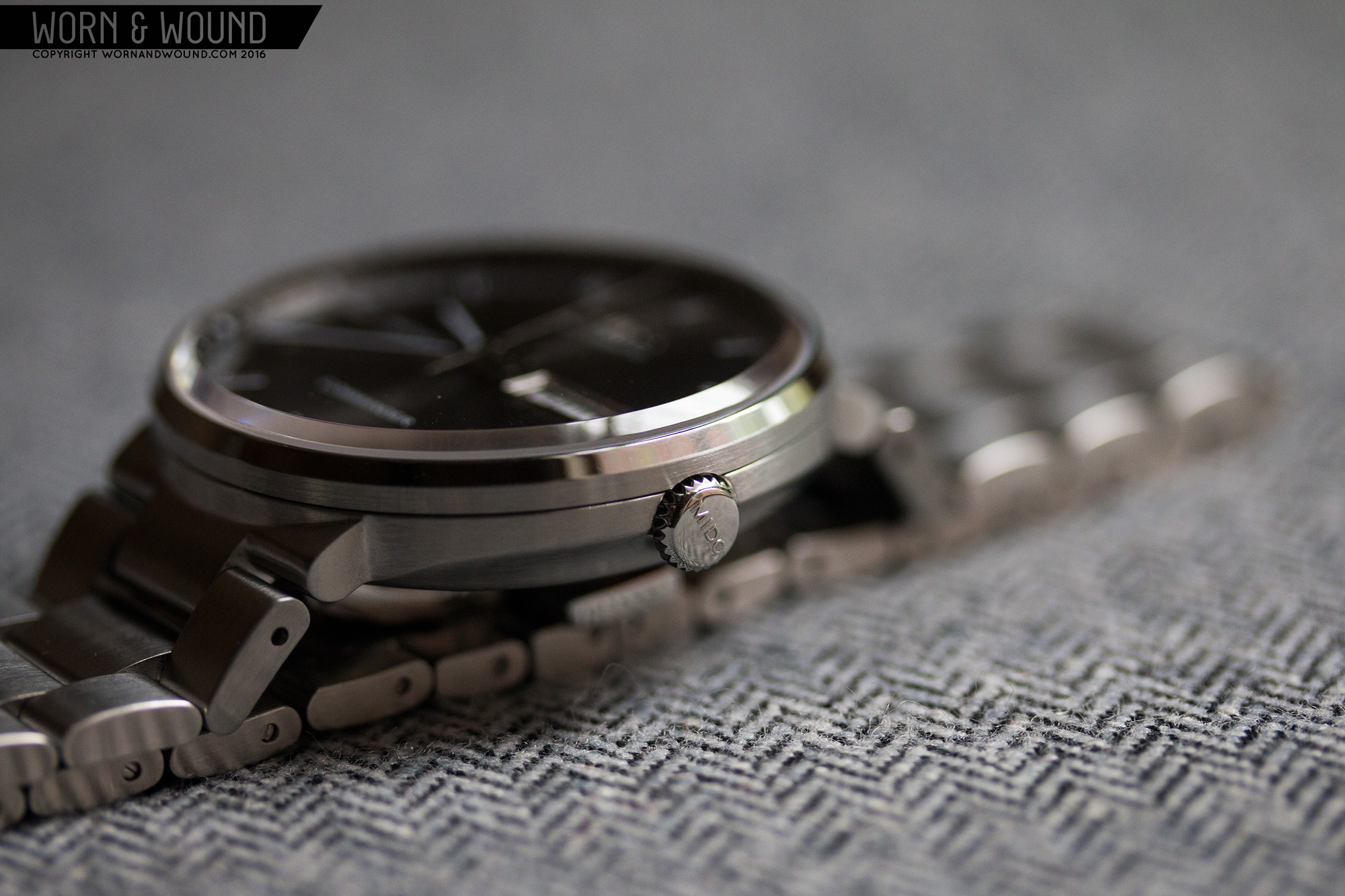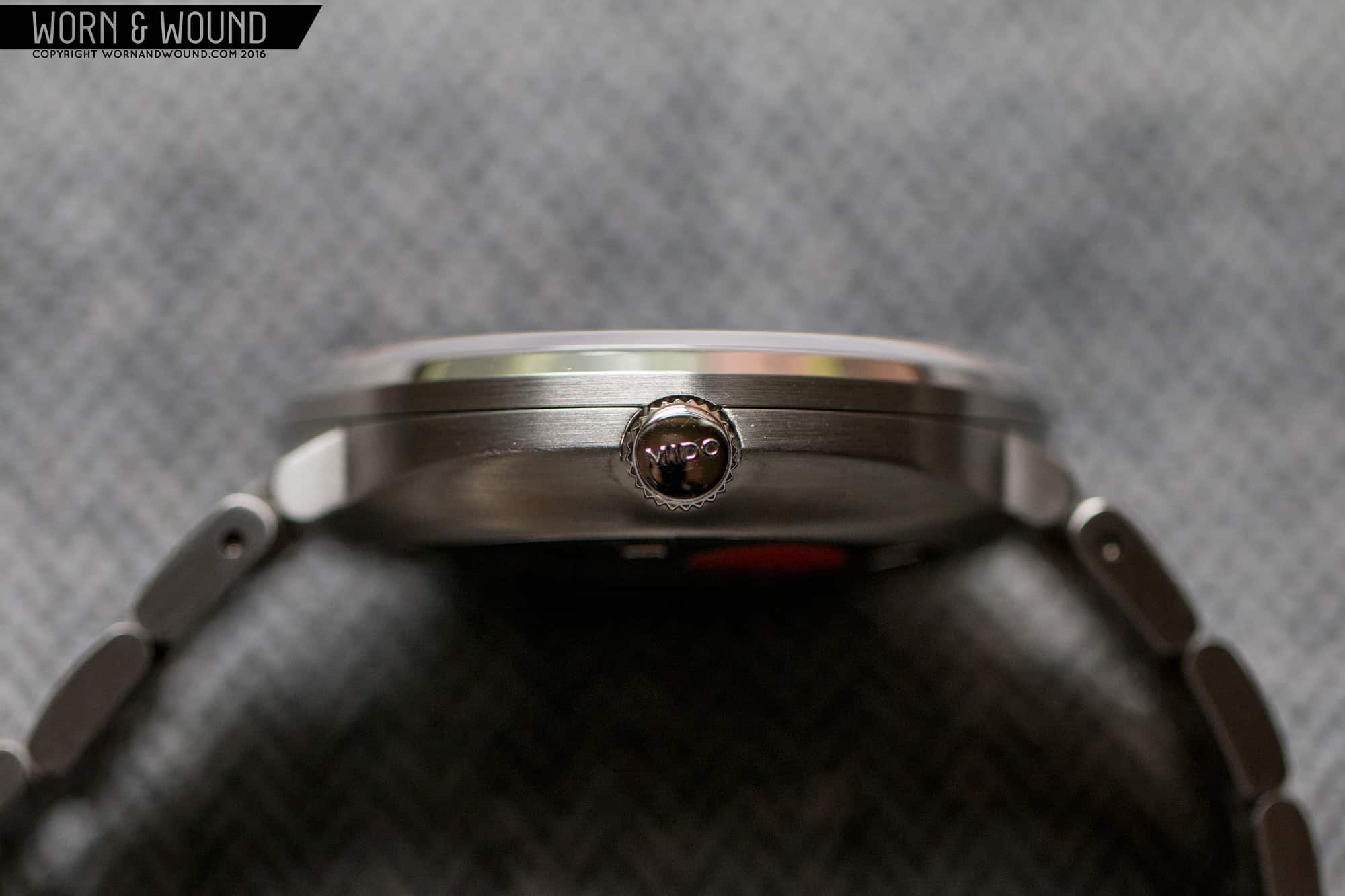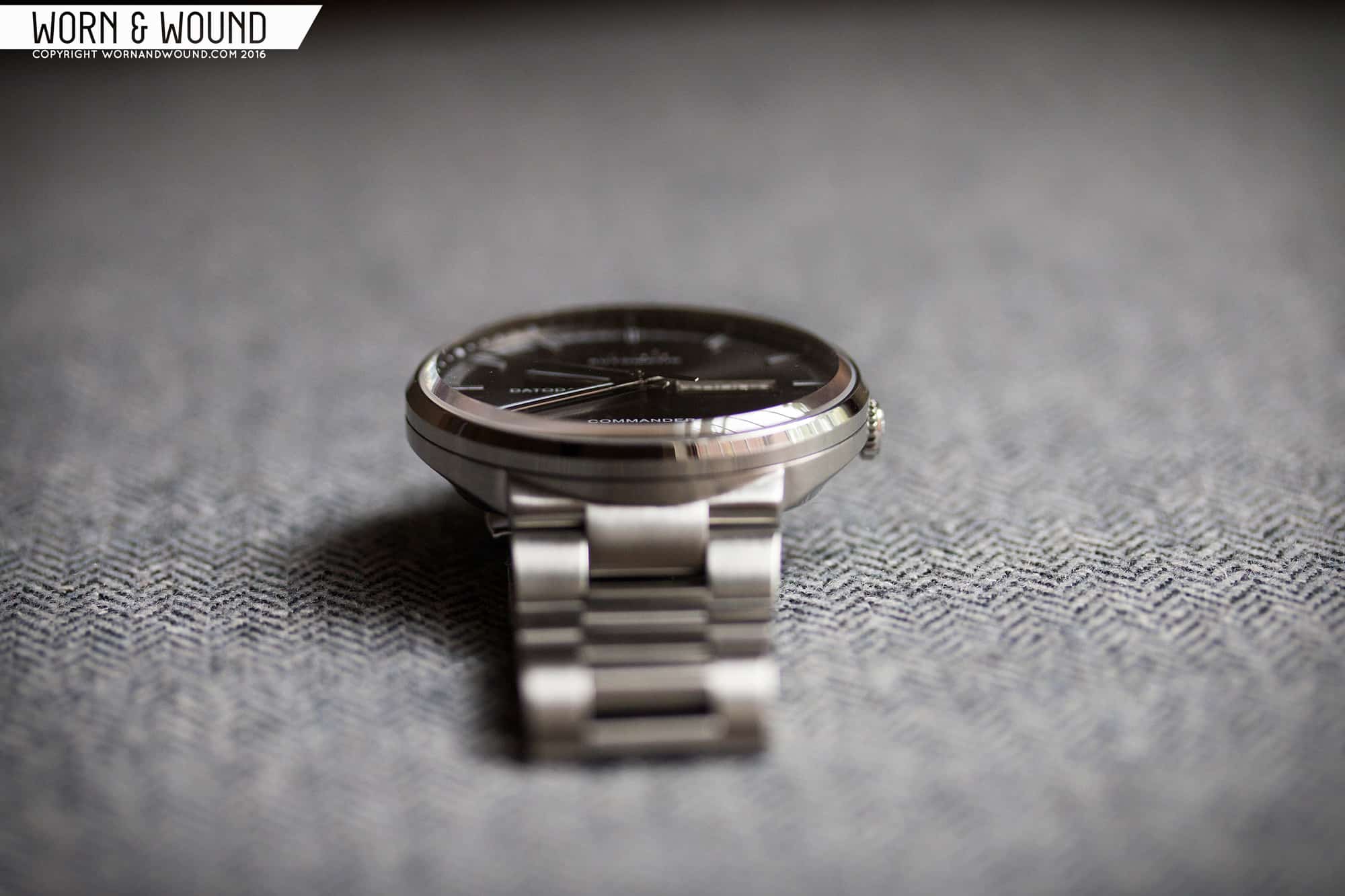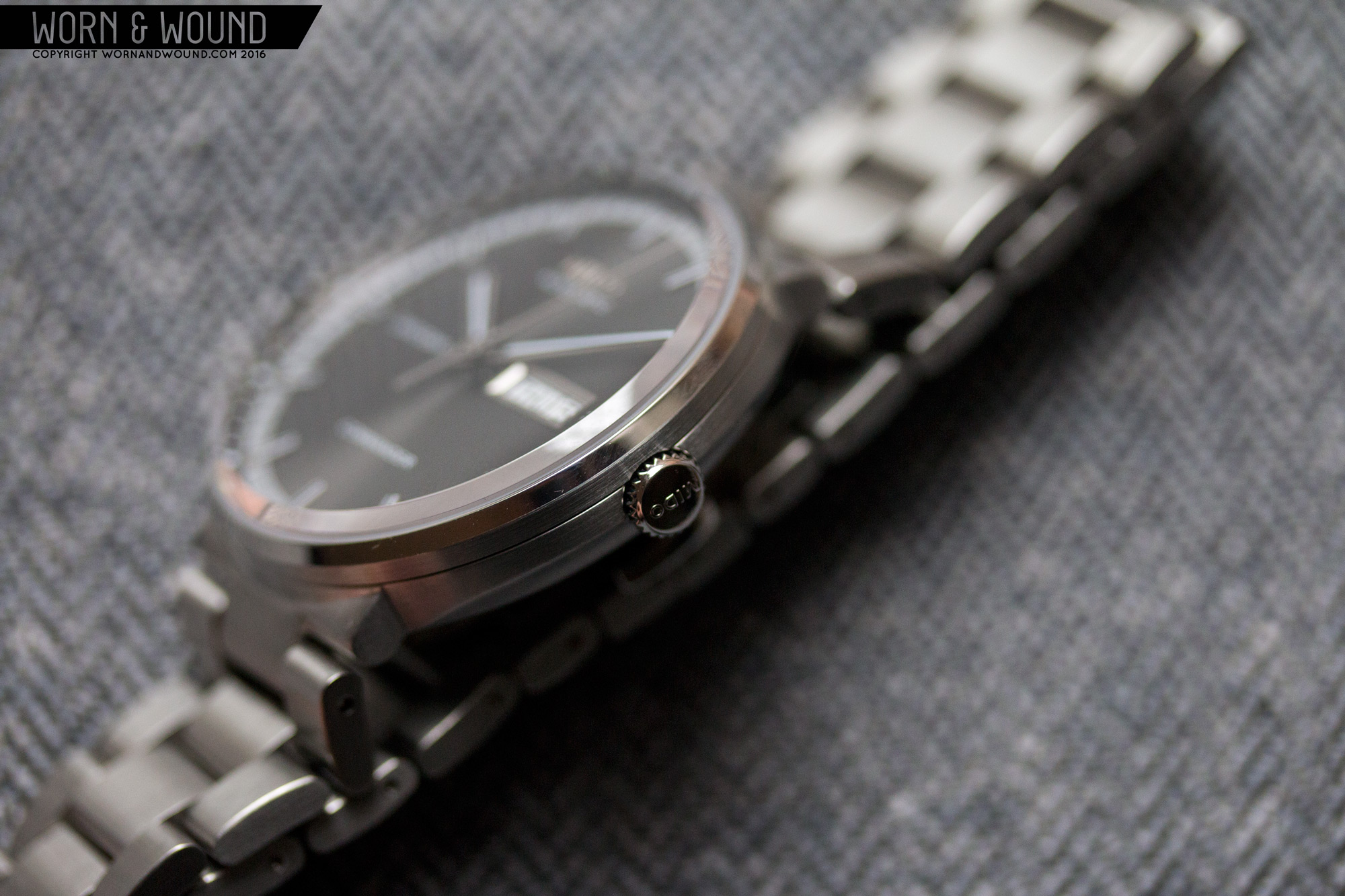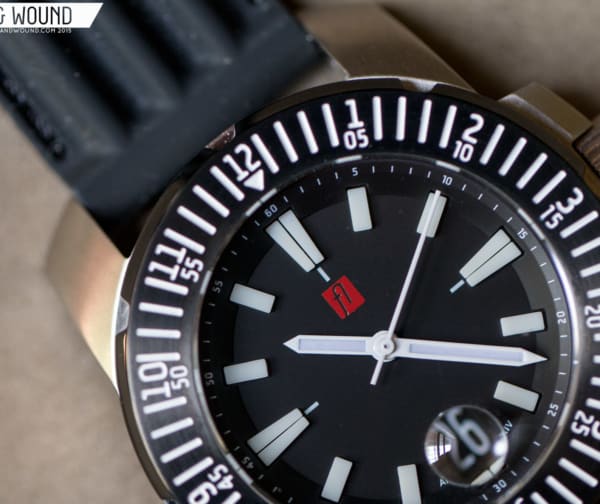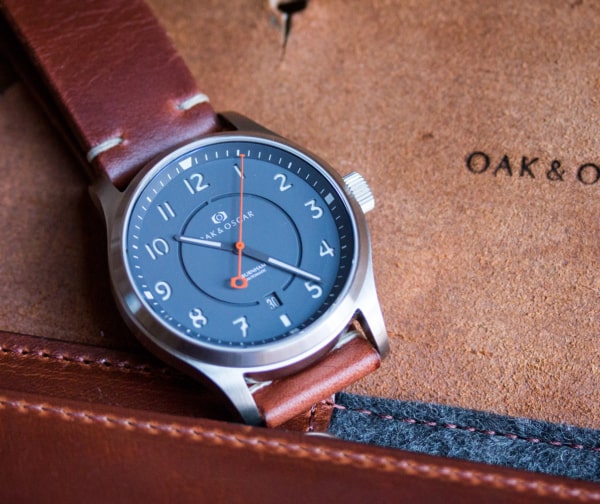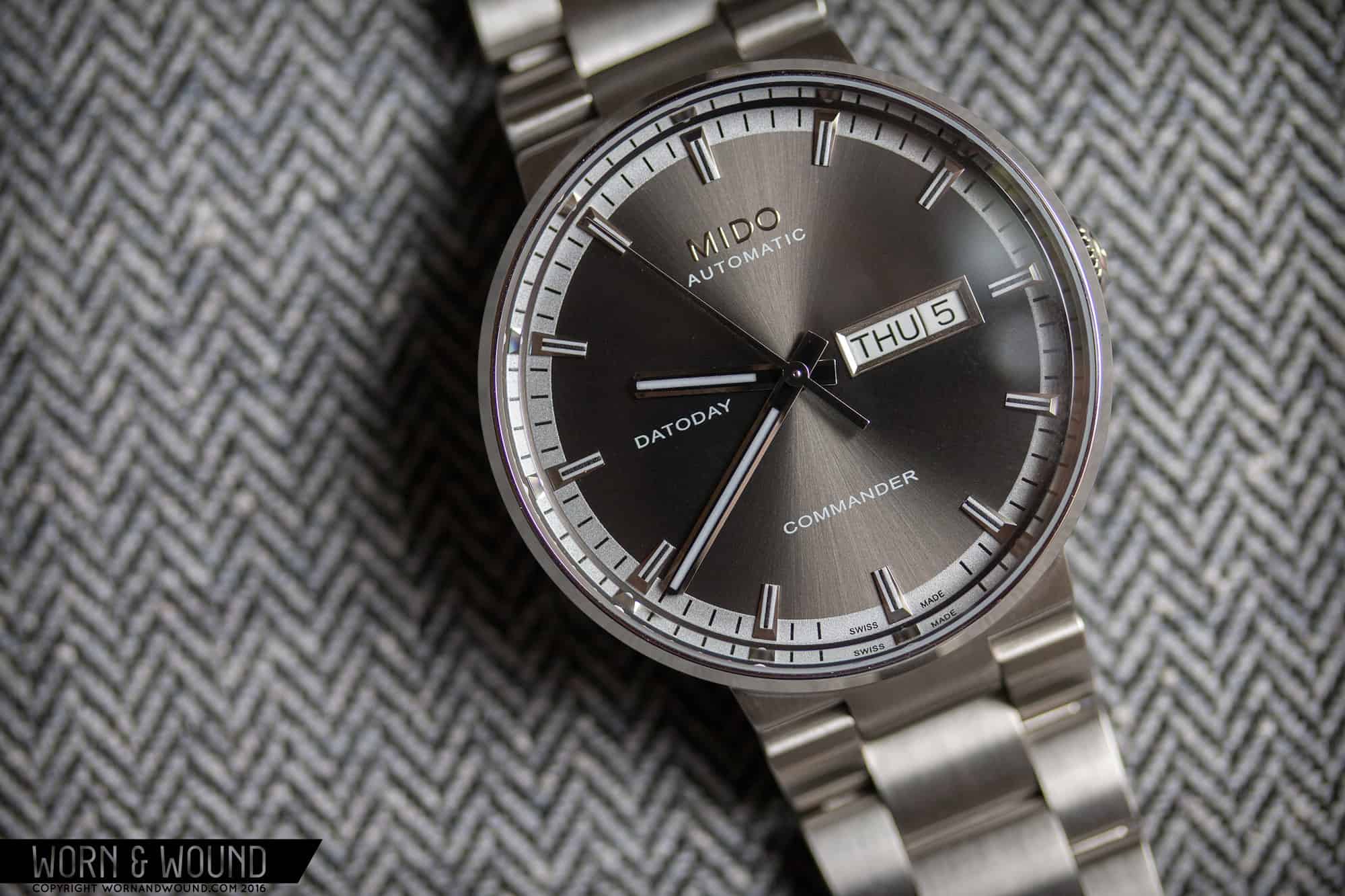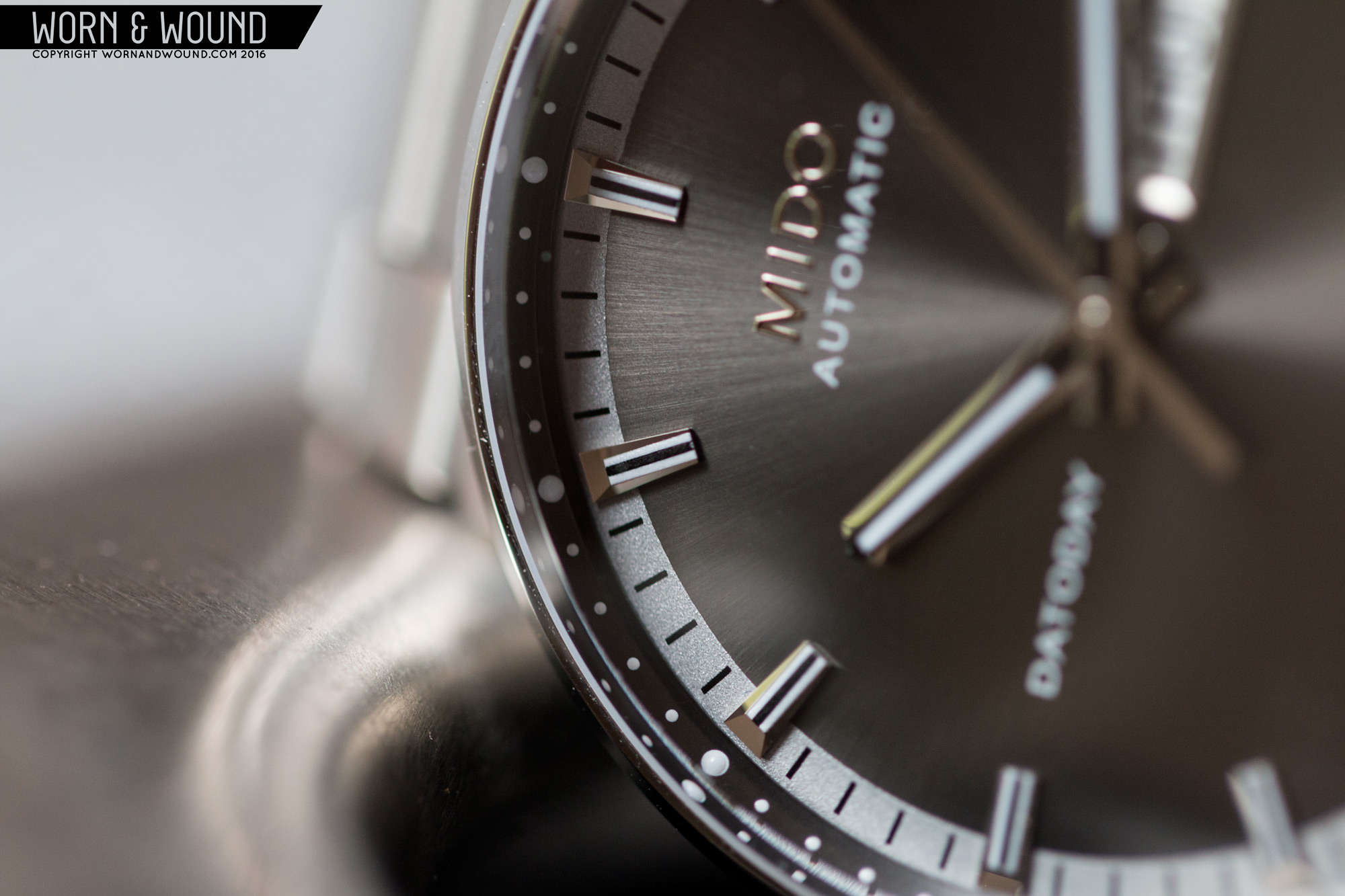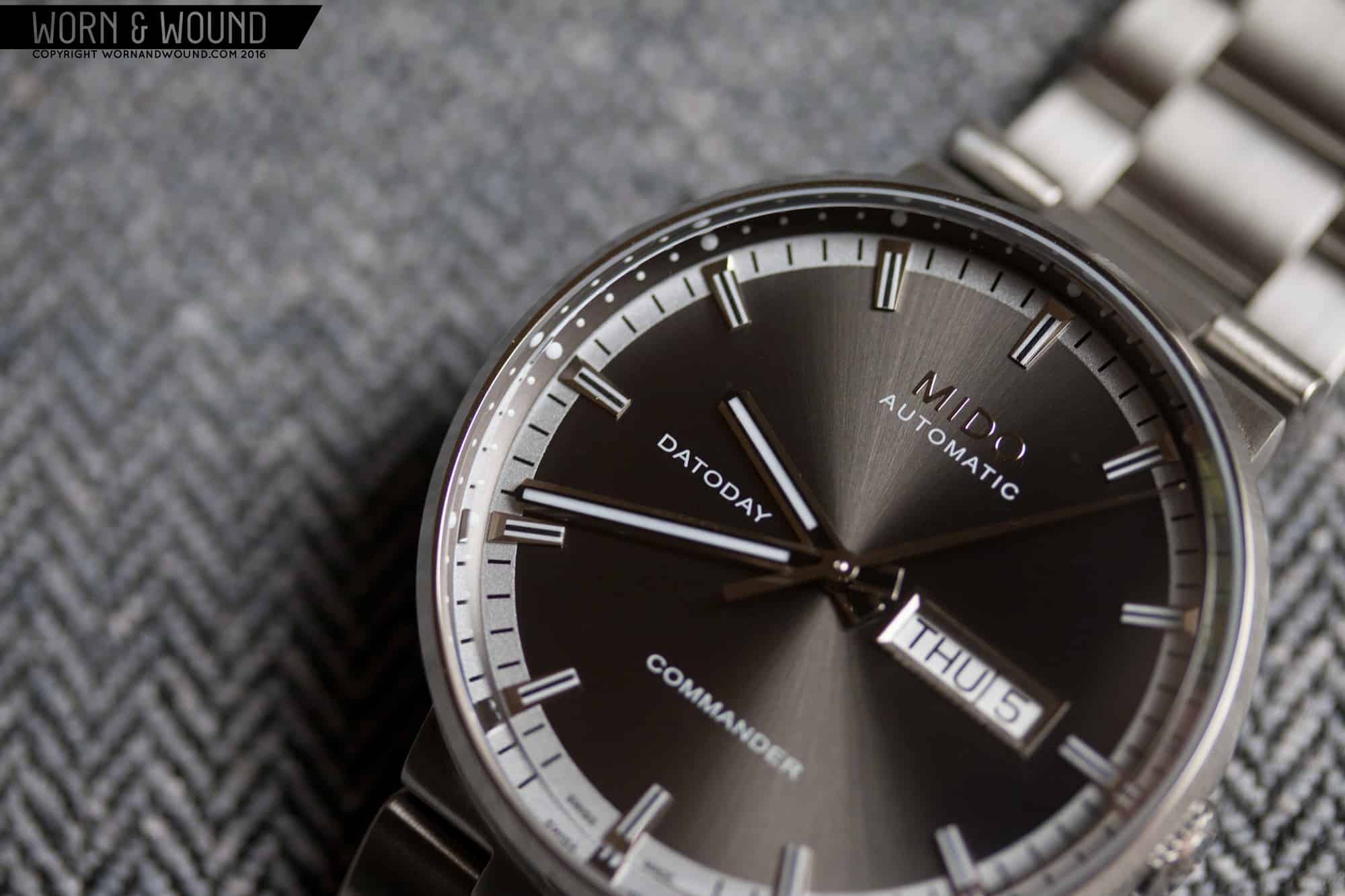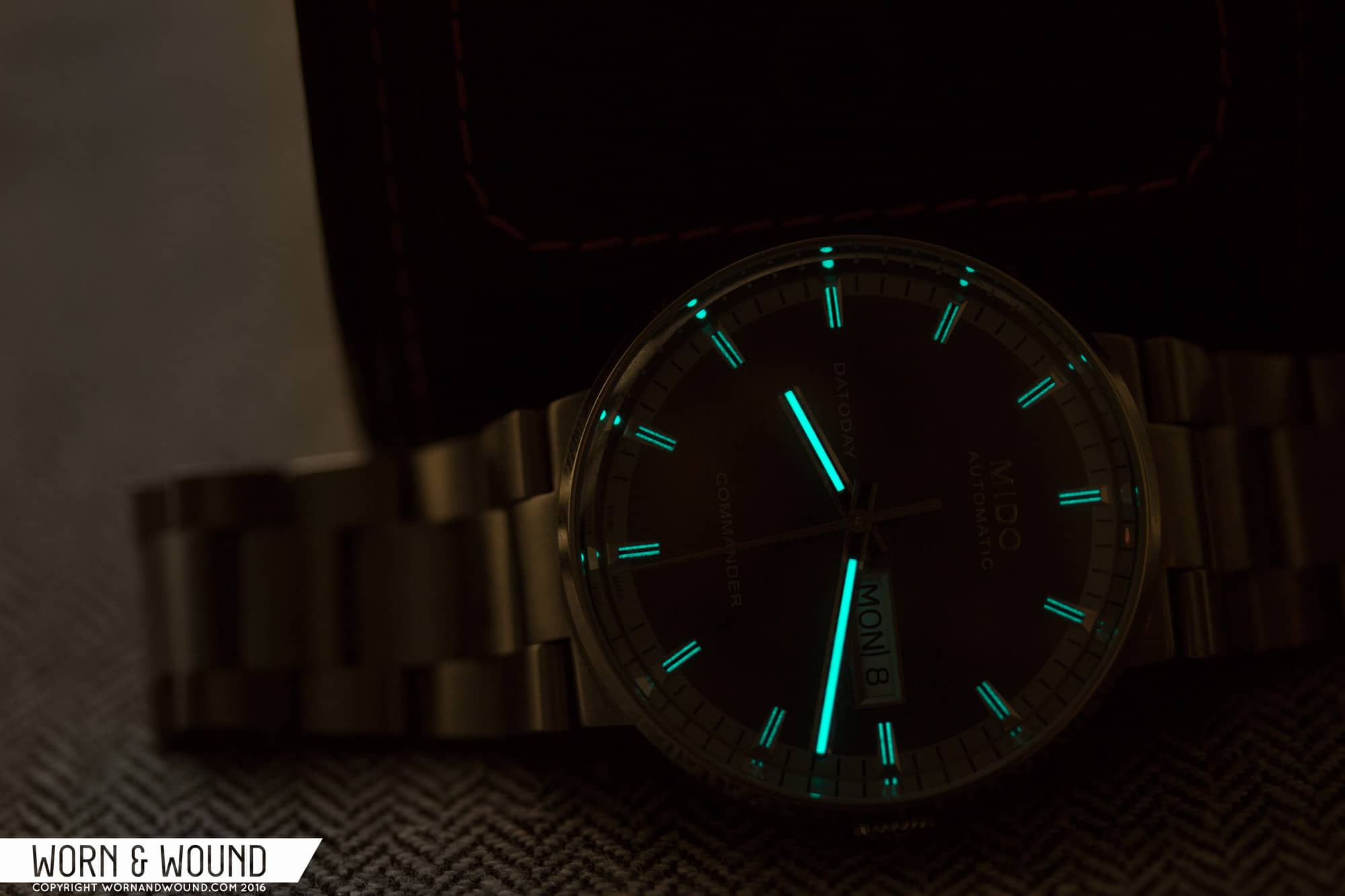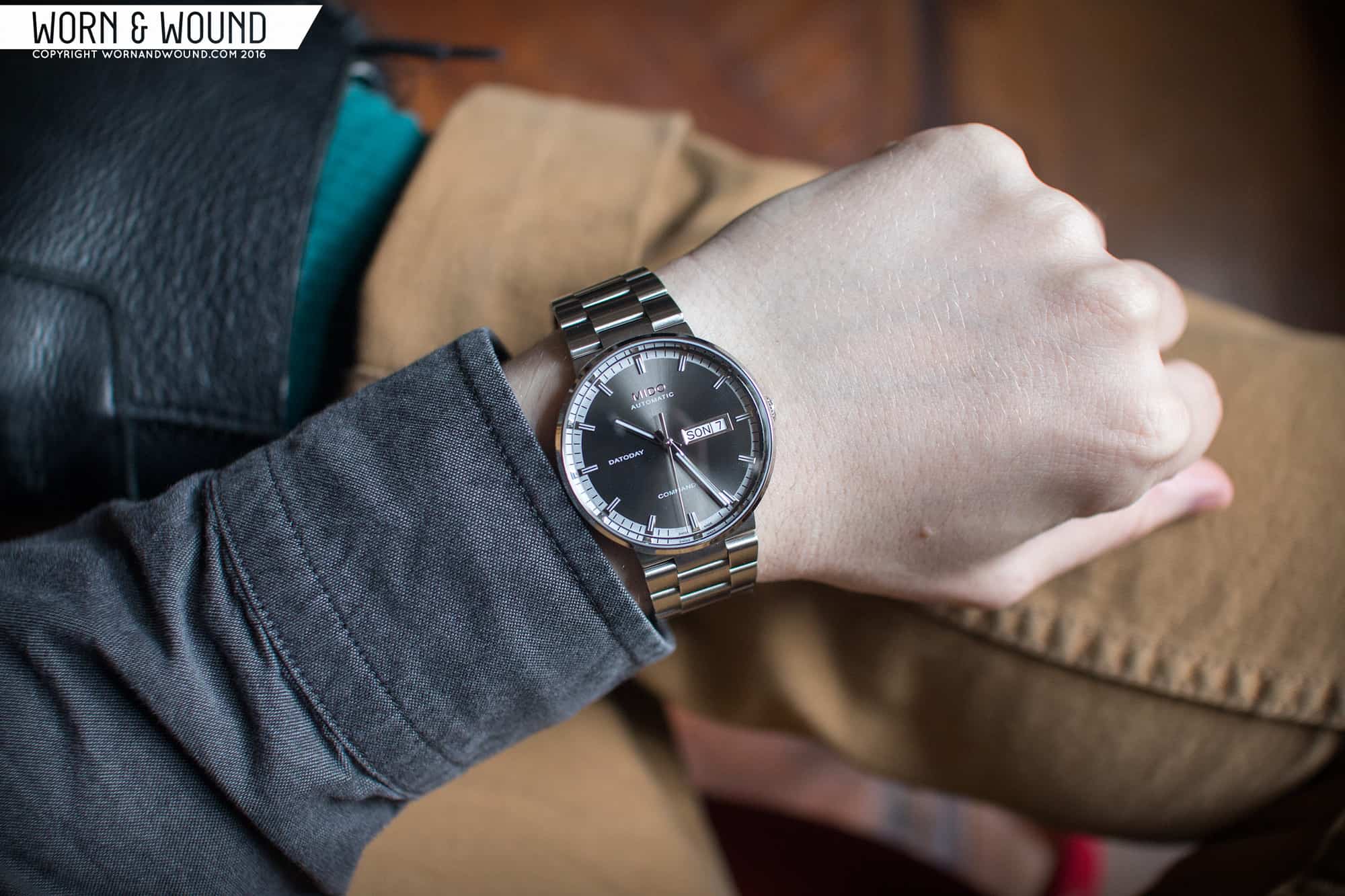Mido is a name that has been popping up on worn&wound with more frequency as of late. The Swatch Group owned brand is not new by any means, they just had focused on non-US markets for the majority of their life span. Now, however, they are pushing in to the states following the success of Tissot and Hamilton, who they share a general price category with. As I mentioned when we first introduced their Baroncelli Heritage watch (which we later did a hands-on with post Basel), what’s great about Mido becoming more available is that they have a nice range of well-priced dress and business-casual watches. A genre I feel is often underserved in at the price point we discuss.
Today we’ll be looking at the Mido Commander II, which as the name suggests is the sequel to a classic Mido watch. A bit larger and more contemporary, the Commander II has a retro style without feeling like a remake. It has an interesting character of its own with its circular case, integrated bracelet and textured dial. Since it’s Swatch Group, inside it’s powered by an ETA automatic movement. In this case, the Caliber 80.611, which features an 80-hr power reserve. Coming in at a retail price of $920, it’s a decent value for a Swiss-made automatic, let alone one with an 80-hr reserve, which typically cost over $1,000 these days.









 Featured Videos
Featured Videos




